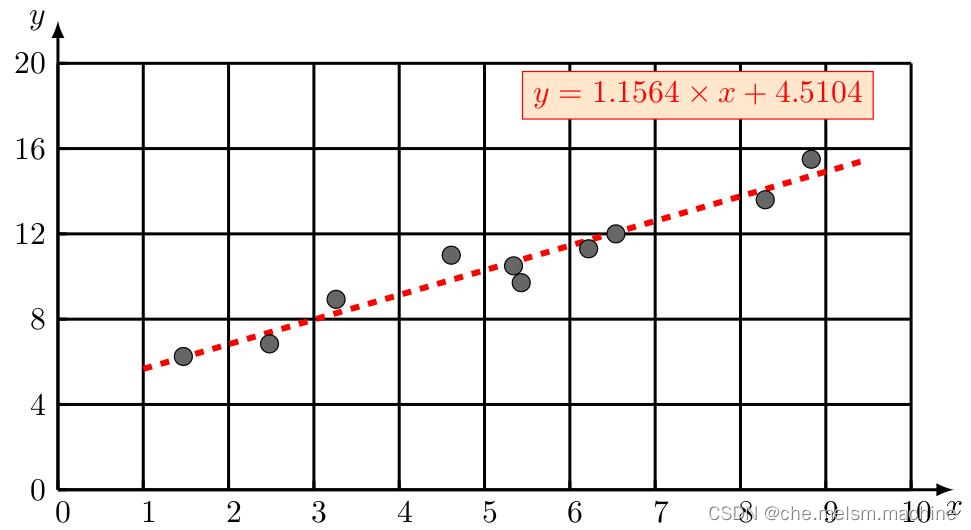偏微分方程逆问题的3种求解方法:从观测数据反推未知参数
发布时间: 2024-07-10 06:17:47 阅读量: 222 订阅数: 143 


# 1. 偏微分方程逆问题的概述**
偏微分方程(PDE)逆问题是根据观测数据来推断未知的PDE解。PDE逆问题广泛应用于图像处理、医学成像、流体力学等领域。
PDE逆问题求解的关键在于将观测数据与PDE模型联系起来。这通常涉及到求解一个反演算子,该算子将观测数据映射到PDE解。反演算子通常是高度非线性的,因此求解PDE逆问题具有挑战性。
PDE逆问题的求解方法主要分为三类:基于最优化的方法、基于变分的方法和基于随机的方法。最优化方法通过迭代地最小化一个目标函数来求解PDE解。变分方法将PDE逆问题转化为一个变分问题,并通过求解变分方程来获得PDE解。随机方法利用随机采样来近似PDE解。
# 2. 基于最优化方法的求解
### 2.1 梯度下降法
#### 2.1.1 基本原理
梯度下降法是一种迭代优化算法,用于寻找函数的局部最小值。其基本思想是沿着函数梯度的负方向迭代更新当前点,直到达到局部最小值。
#### 2.1.2 算法流程和实现
梯度下降法的算法流程如下:
1. 初始化参数:学习率 $\alpha$、最大迭代次数 $N$、当前点 $x_0$。
2. 迭代更新:
- 计算函数梯度:$\nabla f(x_n)$
- 更新当前点:$x_{n+1} = x_n - \alpha \nabla f(x_n)$
3. 判断终止条件:
- 达到最大迭代次数 $N$
- 梯度接近于零:$\Vert \nabla f(x_n) \Vert < \epsilon$
```python
import numpy as np
def gradient_descent(f, x0, alpha=0.01, N=1000, epsilon=1e-6):
"""梯度下降法求解函数局部最小值
Args:
f: 目标函数
x0: 初始点
alpha: 学习率
N: 最大迭代次数
epsilon: 终止条件阈值
Returns:
局部最小值
"""
x = x0
for i in range(N):
grad = np.nabla(f, x) # 计算函数梯度
x -= alpha * grad # 更新当前点
if np.linalg.norm(grad) < epsilon: # 判断终止条件
break
return x
```
### 2.2 共轭梯度法
#### 2.2.1 基本原理
共轭梯度法是一种改进的梯度下降法,通过引入共轭方向来加速收敛速度。共轭方向是指两两正交的方向,在共轭方向上进行搜索可以有效避免锯齿形收敛。
#### 2.2.2 算法流程和实现
共轭梯度法的算法流程如下:
1. 初始化参数:学习率 $\alpha$、最大迭代次数 $N$、当前点 $x_0$、共轭方向 $d_0 = -\nabla f(x_0)$。
2. 迭代更新:
- 计算共轭方向:$d_{n+1} = -\nabla f(x_n) + \beta_n d_n$
- 计算步长:$\alpha_n = \frac{d_n^T (-\nabla f(x_n))}{d_n^T d_n}$
- 更新当前点:$x_{n+1} = x_n - \alpha_n d_n$
3. 判断终止条件:
- 达到最大迭代次数 $N$
- 梯度接近于零:$\Vert \nabla f(x_n) \Vert < \epsilon$
```python
import numpy as np
def conjugate_gradient(f, x0, alpha=0.01, N=1000, epsilon=1e-6):
"""共轭梯度法求解函数局部最小值
Args:
f: 目标函数
x0: 初始点
alpha: 学习率
N: 最大迭代次数
epsilon: 终止条件阈值
Returns:
局部最小值
"""
x = x0
d = -np.nabla(f, x) # 初始化共轭方向
for i in range(N):
grad = np.nabla(f, x) # 计算函数梯度
beta = np.dot(grad, grad) / np.dot(d, grad) # 计算共轭方向系数
d = -grad + beta * d # 更新共轭方向
alpha = np.dot(d, -grad) / np.dot(d, d) # 计算步长
x -= alpha * d # 更新当前点
if np.linalg.norm(grad) < epsilon: # 判断终止条件
break
return x
```
### 2.3 牛顿法
#### 2.3.1 基本原理
牛顿法是一种二阶优化算法,通过利用函数的二阶导数(海森矩阵)来加速收敛速度。牛顿法在函数的局部二次近似处进行迭代更新,收敛速度比梯度下降法和共轭梯度法更快。
#### 2.3.2 算法流程和实现
牛顿法的算法流程如下:
1. 初始化参数:最大迭代次数 $N$、当前点 $x_0$。
2. 迭代更新:
- 计算海森矩阵:$H(x_n)$
- 计算牛顿方向:$d_n = -H(x_n)^{-1} \nabla f(x_n)$
- 计算步长:$\alpha_n = \frac{d_n^T (-\nabla f(x_n))}{d_n^T H(x_n) d_n}$
- 更新当前点:$x_{n+1} = x_n - \alpha_n d_n$
3. 判断终止条件:
- 达到最大迭代次数 $N$
- 梯度接近于零:$\Vert \nabla f(x_n) \Vert < \epsilon$
```python
import numpy as np
def newton_method(f, x0, N=1000, epsilon=1e-6):
"""牛顿法求解函数局部最小值
Args:
f: 目标函数
x0: 初始点
N: 最大迭代次数
epsilon: 终止条件阈值
Returns:
局部最小值
"""
x = x0
for i i
```
0
0





